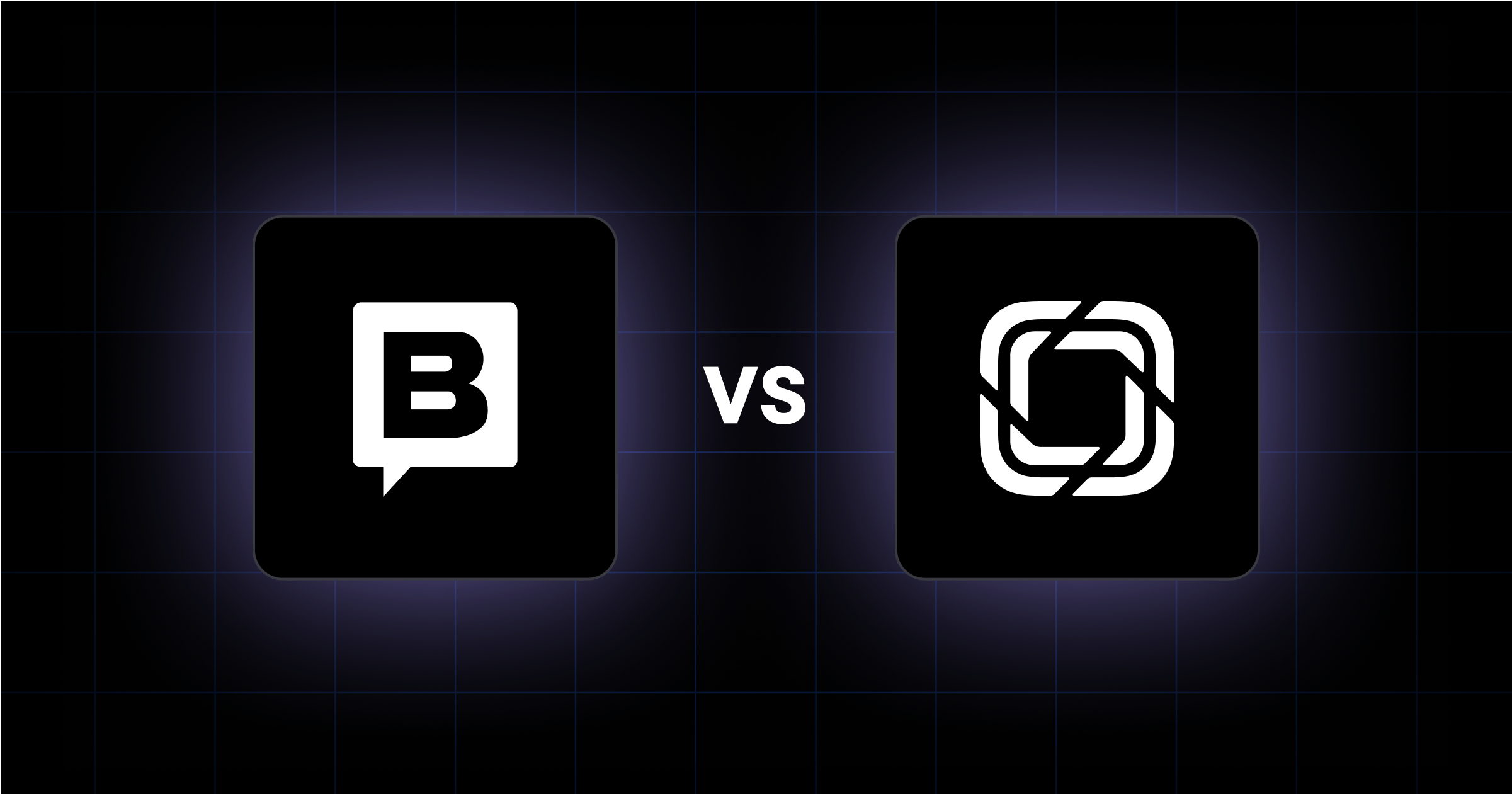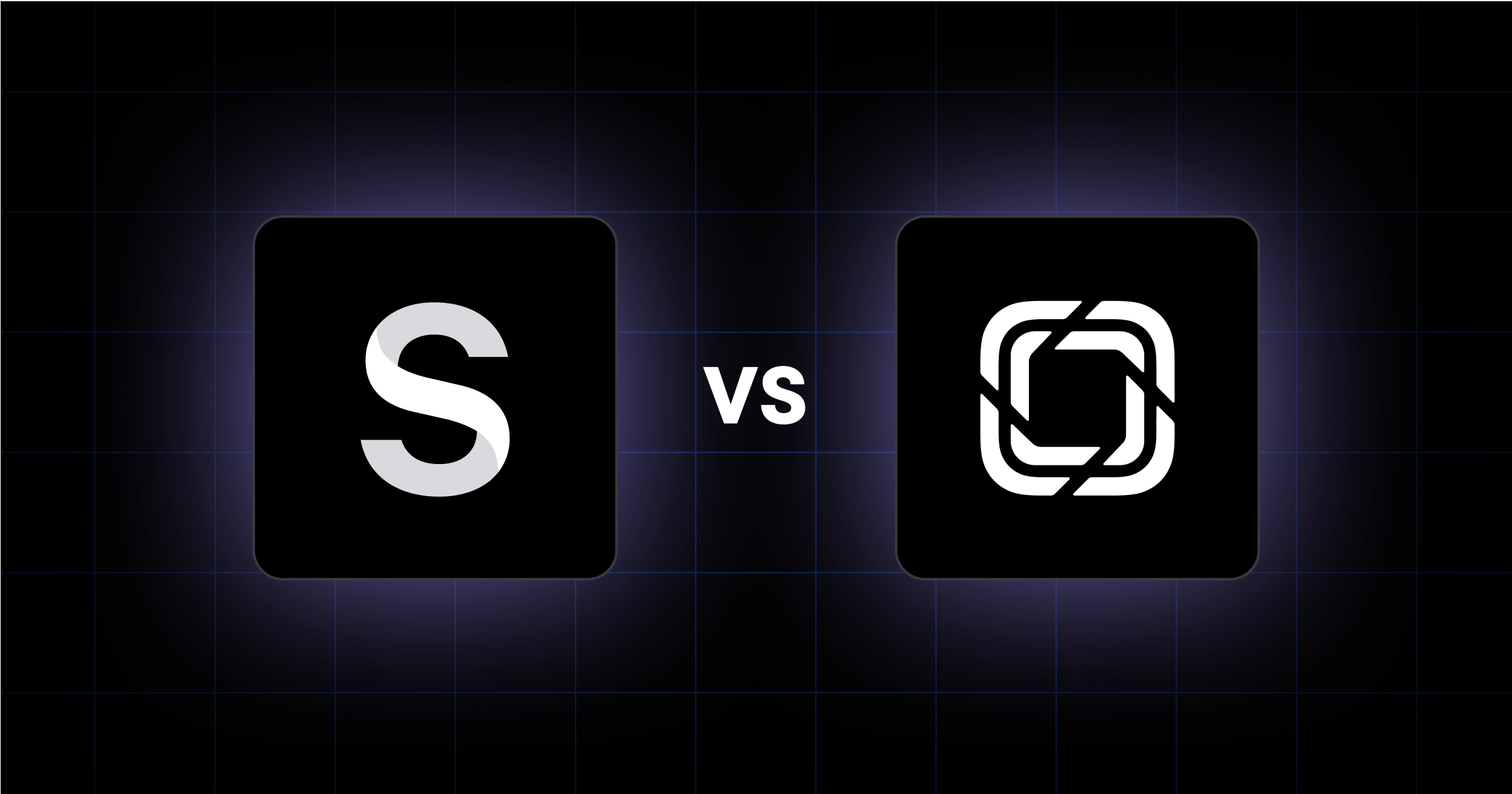Intuitive website navigation is the cornerstone of a successful B2B website.
For businesses, clear and user-friendly navigation not only improves the user experience (UX) but also directly impacts search engine optimization (SEO) and conversion rates. When navigation is poorly designed or outdated, visitors struggle to find what they need, leading to frustration, higher bounce rates, and missed opportunities to turn potential leads into customers.
Outdated navigation systems present several common challenges: users get lost in overly complex menus, mobile visitors encounter unresponsive designs, and search engines struggle to crawl and index site content effectively. To fix these issues, you need to invest in a navigation redesign that prioritizes usability, mobile optimization, and an organized information architecture.
In this guide, we’ll explore best practices and tools to help you transform your site’s navigation into a powerful tool that aligns with your business goals and supports a seamless user experience.
In brief:
- A well-design navigation reduces friction and encourages visitors to explore more.
- Analytics data will show you pain points that signal you need a navigation overhaul.
- Continuous measurement and optimization will keep your navigation aligned with evolving user needs.

Understanding Your Audience and Goals
Redesigning navigation starts with understanding who your audience is and what they need from your website. Identifying user personas is the first step.
Consider the different types of visitors who frequent your site—decision-makers, researchers, or end-users—and map out their specific needs. What are they looking for? Whether it’s detailed product information, case studies, or direct contact options, your desktop and mobile navigation should provide clear pathways to these resources.
Equally important is aligning your navigation with your B2B business goals.
Are you focusing on lead generation, scheduling demos, or driving content engagement?
Each of these goals requires a thoughtful navigation structure that prioritizes relevant pages, such as lead forms, demo request pages, or blog content.
To refine your understanding, use tools like Google Analytics, Hotjar, or Microsoft Clarity to analyze user behavior. These tools provide insights into how users interact with your site, such as which pages they visit most, where they drop off, and how they navigate.
Key Principles of Effective Website Navigation
What separates good from bad website navigation? The answer lies in following the principles below.
Simplicity
Simplicity is at the heart of effective navigation design. A cluttered menu with too many options can overwhelm users, making it difficult for them to find what they need. Instead, aim for a clean and minimal approach by limiting the main navigation items to five to seven options.
This reduces cognitive load and keeps users focused on the most important sections of your site.
To achieve simplicity, use concise and descriptive labels that are easy for users to understand. Avoid jargon or overly technical terms that might confuse visitors. Additionally, grouping related items under clear categories can make navigation even more intuitive.
Consistency
Consistency in navigation design builds trust and familiarity. When users encounter the same menu structure, labels, and design elements across your site, they feel more confident navigating through your content.
Uniform navigation ensures that visitors don’t have to relearn how to use your site on every page.
This principle also extends to responsiveness across devices. Whether users access your site on a desktop, tablet, or smartphone, the navigation experience should remain seamless. Use responsive design techniques to ensure that menus adapt to different screen sizes while maintaining their structure and functionality.
Accessibility
Your website should be usable for everyone, including individuals with disabilities. This means designing navigation that works well with screen readers, offering keyboard-friendly navigation, and ensuring sufficient contrast for readability.
Compliance with ADA (Americans with Disabilities Act) guidelines is not just a legal requirement—it’s a best practice that demonstrates inclusivity. Use clear and descriptive alt text for navigation elements and ensure that all interactive components have focus states for keyboard users. By incorporating these principles, you create a more welcoming and functional experience for all visitors, which can also positively impact your site's reputation.
Mobile-first approach
With mobile devices accounting for a significant portion of web traffic, you need to adopt a mobile-first approach to navigation.
Navigation on smaller screens requires thoughtful design. For example, using collapsible menus, such as hamburger icons, helps save screen space while maintaining access to key pages.
Interactive elements should be touch-friendly, with sufficient spacing to avoid accidental clicks. Placing essential navigation items within thumb reach makes them easier to use. Additionally, sticky headers can keep the main navigation visible as users scroll.
Types of Navigation and Their Use Cases
Different websites require different types of navigation to suit their content, goals, and audience needs. Below, we’ll explore some of the most common navigation types and the use cases they’re best suited for.
Horizontal Navigation Bars: Best for Simple Site Structures
Horizontal navigation bars are one of the most familiar and widely used navigation patterns. Positioned at the top of the page, they work best for websites with a straightforward structure and a limited number of main categories.
Think of a company’s homepage with tabs like “About Us,” “Services,” “Case Studies,” and “Contact.” This design keeps things clean and allows users to immediately identify key areas of interest.
The simplicity of horizontal navigation bars makes them ideal for users who prefer a clear overview without diving into complex menus.
However, their effectiveness diminishes for content-heavy websites, as they lack the space to accommodate numerous categories. To maximize their usability, ensure the labels are concise and intuitive. Pairing a horizontal navigation bar with a search function can further enhance the user experience by offering alternative ways to find content.
Vertical Sidebars: Ideal for Content-Heavy Websites or Portals
Vertical sidebars are an excellent choice for websites with extensive content or multiple subcategories. Typically located on the left or right side of the page, these menus provide ample space to display a detailed hierarchy of links.
For example, an online learning portal might use vertical sidebars to categorize courses by topic, level, or certification type.
The advantage of vertical sidebars lies in their scalability. Unlike horizontal menus, they can easily accommodate additional links without compromising readability. This makes them a go-to option for e-commerce sites, blogs, and knowledge bases.
To keep vertical sidebars user-friendly, use collapsible sections to prevent overwhelming visitors with too many options at once. Thoughtful design elements, like clear headings and visual cues, can further improve navigation clarity and usability.
Mega Menus: Best for Complex SaaS and Enterprise Solutions
Mega menus are designed to handle large amounts of information without sacrificing organization. These expansive, dropdown-style menus reveal multiple levels of navigation in a single view, making them ideal for complex SaaS or enterprise websites with diverse offerings.
For instance, a cloud software company might use a mega menu to display links to products, solutions, resources, and support options.
The key to effective mega menus is structure. Group related items under clear headings and use visual elements like icons or images to differentiate sections.
While mega menus provide extensive functionality, they require careful planning to avoid overwhelming users. Prioritize the most relevant links and ensure the menu remains visually balanced. Testing with real users can help validate the menu’s usability and uncover opportunities for improvement.
5 Steps to Redesign Your Website Navigation
Redesigning your website’s navigation can feel like a daunting task, but breaking the process into clear, actionable steps can simplify the journey.
Conduct a navigation audit
A thorough navigation audit is the first step toward understanding what works and what doesn’t in your current system.
Evaluate your existing structure to identify pain points such as confusing menus, broken links, or low-performing pages. Look at metrics like bounce rates and exit rates to understand where users might be getting frustrated.
This process also involves assessing the content hierarchy. Are the most critical pages easy to find? Is the navigation logical and intuitive?
Answering these questions will allow you to pinpoint areas that need improvement and create a solid foundation for your redesign.
Gather input from users and stakeholders
Your users and stakeholders hold the key to understanding how navigation should function.
Gathering feedback through surveys, usability testing, and feedback loops can provide invaluable insights into their needs and frustrations. Users can highlight areas where they struggle, while stakeholders can outline business priorities that navigation must support.
Usability testing, in particular, helps you observe real-time interactions with your site’s navigation. Combine this data with qualitative input from surveys or interviews to get a comprehensive view. Ensuring that all voices are heard in this stage sets the groundwork for a redesign that serves both user expectations and organizational objectives.
Define your new structure
With a clear understanding of user needs and business goals, the next step is defining your new navigation structure. This involves creating a hierarchy that includes primary navigation, secondary menus, and calls-to-action (CTAs).
Each level should flow logically, guiding users toward the most important actions on your site.
Prioritize simplicity and clarity in your structure. Use clear labels that align with how users think about your content. Consider grouping related items under dropdowns or submenus to keep the navigation visually clean.
Create wireframes or prototypes to test before implementation
Wireframes and prototypes allow you to test your navigation design before it goes live. Start with low-fidelity wireframes to map out the basic structure, then progress to interactive prototypes that simulate the user experience.
Tools like Figma or Adobe XD can help bring your concepts to life.
Testing these prototypes with real users helps identify any issues early in the process. Do users find the labels intuitive? Are they able to navigate efficiently?
Gathering this feedback before implementation saves time and resources by making sure the design meets expectations from the start.
Test navigation performance post-launch
Once your new navigation is live, the work isn’t over. Ongoing testing is required to check that the system performs as intended. Use A/B testing to experiment with different design elements, and leverage heatmaps to understand how users interact with the navigation.
Pay close attention to metrics such as bounce rates, session duration, and pages per session. These numbers can indicate whether the new design is effectively guiding users through your site.
Common Mistakes to Avoid
Even with the best intentions, navigation design can go wrong. Recognizing and avoiding common mistakes will help you create a navigation that is effective and user-friendly.
Overloading Navigation with Many Options
When users are presented with too many choices, they often struggle to make a decision—a phenomenon known as choice paralysis.
Overloading your navigation menu with excessive options can overwhelm visitors and make it difficult for them to locate what they need. Instead of offering every page in the menu, focus on highlighting the most critical sections. Consolidate related content into dropdowns or submenus to reduce clutter while maintaining accessibility.
A clean, focused navigation menu improves usability by guiding users toward their goals without distraction. This approach also improves website design, creating a more polished and professional impression for your site.
Using Unclear Menu Labels
Your navigation labels should be intuitive and aligned with your audience’s expectations. Using unclear or jargon-heavy terms can confuse visitors and cause them to abandon their search.
To avoid confusing users, use plain language and prioritize user understanding. Conduct user testing or card-sorting exercises to validate your labels before finalizing them. For example, replacing “Applications” with “Our Solutions” provides more clarity.
In addition to improving navigation, clear labels also build trust by showing that you understand your audience’s needs.
Hiding Critical pages or CTAs
Critical pages and calls-to-action (CTAs) should never be buried several clicks deep. If visitors have to navigate through multiple layers to find a contact form or product page, they’re likely to lose interest.
Key actions should be easily accessible within one or two clicks from the homepage.
To prevent this, highlight CTAs and important pages in primary or secondary navigation. You can also use sticky headers or persistent menu bars to keep them visible as users scroll.
Ignoring Responsive Design for Mobile Navigation
Failing to optimize your navigation for smaller screens can alienate a significant portion of your audience. Menus that are difficult to use on mobile devices lead to frustration and drop-offs.
Mobile-friendly navigation includes collapsible menus, touch-friendly buttons, and simplified layouts. Test your navigation across various devices and screen sizes to ensure they function as intended.
Tools and Resources for Navigation Redesign
A successful navigation redesign relies on the right tools to streamline planning, testing, and optimization. Below are some recommended resources to support your efforts.
Sitemap Generators for Planning
Sitemap generators like Slickplan and Dynalist are invaluable for visualizing your site’s structure.
These tools allow you to create hierarchical diagrams that outline how pages will be organized within your navigation. By mapping everything out beforehand, you can ensure your structure aligns with both the user needs and your business priorities.
Slickplan, for example, offers drag-and-drop functionality and collaboration features that make planning a breeze. Dynalist provides a lightweight, flexible alternative for outlining site content. Using these tools helps you build a strong foundation for your redesign.
UX Tools for Testing
UX tools like Figma, InVision, and Axure enable you to create interactive prototypes that simulate your navigation’s user experience. These platforms are ideal for testing design concepts before implementation, allowing you to identify potential issues early.
Figma’s collaborative features make it easy to involve team members and stakeholders in the design process. InVision offers robust prototyping and feedback tools, while Axure excels in creating detailed wireframes for complex systems.
Analytics Platforms to Track Performance
Post-launch, analytics platforms like Google Analytics and Semrush provide crucial insights into how users interact with your navigation.
Metrics such as bounce rates, pages per session, and exit rates help you identify areas for improvement.
Google Analytics allows you to track navigation paths and measure user engagement, while Semrush offers SEO-focused insights to optimize your site structure. These tools will help you optimize your navigation on an ongoing basis and help your redesign achieve its intended results.
Real-World Examples of Great Navigation Design
Top-performing B2B websites excel in creating intuitive, user-friendly navigation that drives engagement and conversions.
- HubSpot: Features a clean horizontal menu with clearly labeled sections and dropdown menus for additional options. Sticky headers keep navigation accessible while scrolling.
- Salesforce: Uses a well-structured mega menu to organize its diverse product offerings with clear headings and visual elements. A prominent search bar allows visitors to quickly locate specific information.
Study these examples and identify design patterns and features that align with your goals, such as sticky headers, mega menus, or smart search bars. Applying these best practices will help your navigation redesign deliver an outstanding experience for your users.
How Website Navigation Redesign Impacts SEO and Performance
Website navigation isn’t just about user experience—it plays a critical role in SEO and overall site performance. A well-designed navigation structure improves search engine visibility and user engagement.
SEO benefits include:
- Improved Crawlability and Indexing: Logical site structures make it easier for search engines to crawl and index your content. Clear hierarchies and internal linking help search bots understand your website’s relevance.
- Strategic Internal Linking: Redirect attention to high-value pages like product listings, service pages, or blogs, boosting their search rankings.
As far as performance is concerned, a navigation redesign helps you achieve:
- Reduced Bounce Rates: Clear and intuitive navigation keeps users engaged, minimizing frustration and reducing the likelihood of exits.
- Increased Time-on-Site: Seamless navigation encourages users to explore additional content, increasing session duration and user satisfaction.
Discover More Great Website Designs
Redesigning your website's navigation is a strategic move that improves your visitor’s experience and helps you achieve important goals.
By following these tips and optimizing based on user feedback and data, you can carry out a website navigation redesign that turns your website into an important driver of growth.
Ready to level up your B2B website? Download our Best B2B SaaS Websites eBook to discover more inspiring examples and actionable insights that can transform your digital presence.




